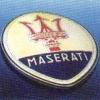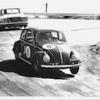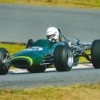Surprised you make no mention of Can Am, HistoryFan, as this was by far the most successful programme in McLaren's CV up until 1972, and one for which they did build their own engines, in house, albiet based on a Chevy Big Block bottom end .
McLaren customer cars in Can Am and F5000 were almost, but not quite exclusively built under licence by Trojan, something that has been discussed on here recently.
McLaren only built two type's of F2 car, the M4 which dated from 1967, and the M21, which was a one off works car to give mileage and experience to Jody Scheckter in 1972, and not sold to customers, although the Trojan T101 F5000 that effectively replaced the M22 F5000 car was based on it.
The original F2 M4 programme was itself effectively replaced by the M10 F5000 programme.
Indycars were a casualty of the dramatic fall off in the Grand Prix teams' performance (more's the pity)..
The one off M25 F5000 car, based on the M23 (and at one time converted back into one) was an interesting idea, although it would not appear to have been a serious attempt to reenter the F5000 customer market.



















